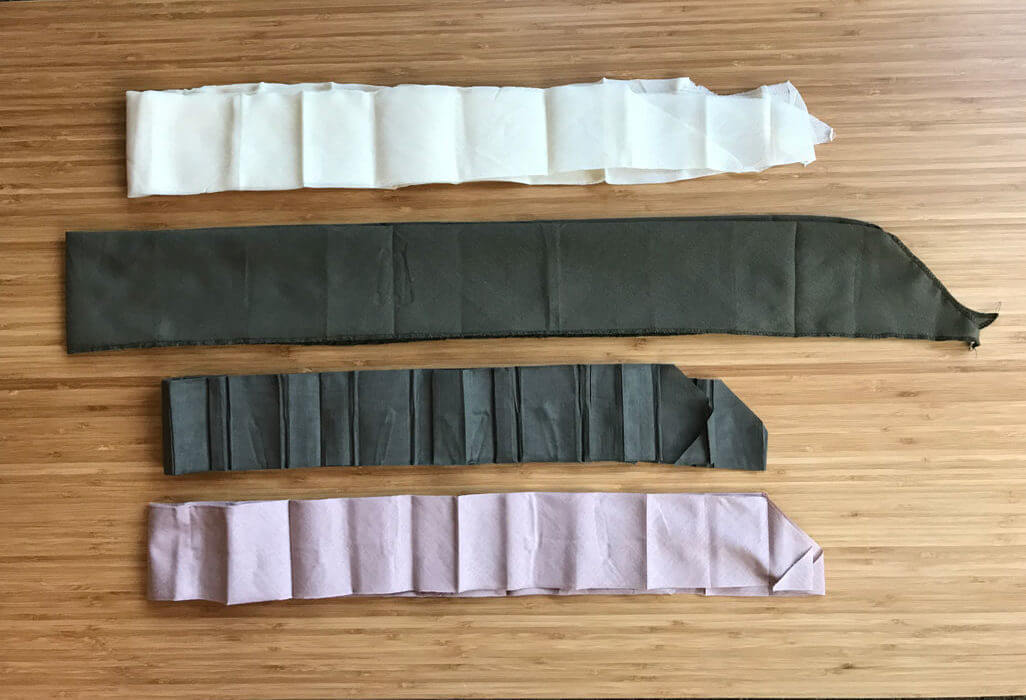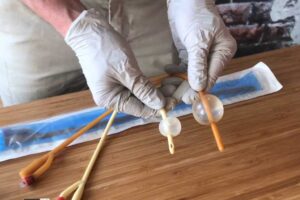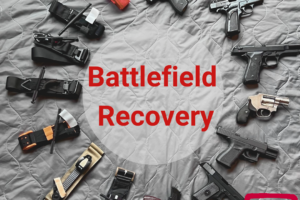Your IFAK is not complete without cravats
- Posted by Mike Shertz MD/18D
- Categories Equipment
Cravats as Improvised Tourniquets
🕖 Reading Time, 5 minutes
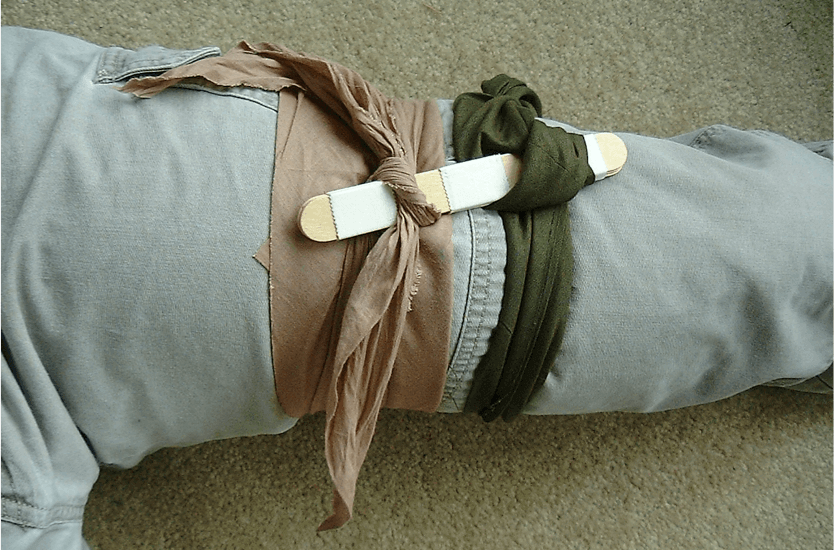
Other Uses for Cravats
The classic military triangular bandage, or cravat, is made of muslin cotton in a subdued color. It is a multi-use medical item that can be used as:
- a sling,
- to secure splints,
- form a pressure dressing,
- create a tight bandage over a gauze packed wound,
- or even be used as an improvised tourniquet.
Additionally, the cravats come packaged with two large safety pins, which have many other uses. See, Versatile Safety Pins
Sourcing Cravats
There are civilian/EMS counterparts to the military cravat/triangular bandage. However, in general they are made of substantially cheaper material, their safety pins are smaller and weaker, and they are therefore are overall less useful.
Having taught TCCC classes since Dr. Butler’s article was first published in 1996, we routinely taught students how to effectively use this improvised tourniquet because no commercial tourniquet existed. Although now surpassed by more efficacious, proven, commercial tourniquets, the cravat tourniquet still has a role when planning medical care in-depth. Eventually, you may run out of commercial tourniquets and have to come up with another option.
The military cravat is a robust addition to your IFAK due to its versatility.
For decades, we recommended actual military cravats over their civilian counterparts. The military cravats were made of stronger material and were higher quality. Of course, the increase in quality made them more expensive than the 79-cent civilian counterparts. Additionally, we had a sense the cheaper cravats wouldn’t make adequately tight improvised tourniquets without tearing and ripping apart. Military suppliers being as they are, in 2013 we experienced multiple, recent manufacture, military cravats that could not be made into adequately tight improvised tourniquets. They were too short. Measuring the actual size of the current military cravat revealed it was several inches smaller than the specified size listed on the package. Despite trying several lots of new, actual military cravats, the problem persisted.
Military suppliers being as they are, in 2013 we experienced multiple, recent manufacture, military cravats that could not be made into adequately tight improvised tourniquets. They were too short. Measuring the actual size of the current military cravat revealed it was several inches smaller than the specified size listed on the package. Despite trying several lots of new, actual military cravats, the problem persisted.
Inadequacy of Current Cravats
Lacking a good improvised tourniquet cravat to recommend to students, we tested over twenty “cheap” civilian EMS cravats purchased from all over the world. Surprisingly, all made adequate improvised tourniquets as verified by Doppler ultrasound on my 23.5-inch thighs. We had a similar experience with these cheap cravats on students. See, 12/12 Improvised tourniquets successful.
Unfortunately, the cheap civilian cravats are flimsy and considerably more uncomfortable as improvised tourniquets. Additionally, they don’t do nearly as good of a job forming a tight wound packing bandage. We suspect this is because they have some stretch to them, compared to their military counterparts. This left us without a “Goldilocks” option of one cravat that could adequately perform all cravat tasks and be “just right.”
Chinook Medical’s Oversized Cravat
Recently we discovered Chinook Medical is making an oversized military cravat. The traditional military cravat specs are 37 x 37 x 52 inches, however, most recently produced are much smaller. The first Gulf War vintage versions were the correct size and worked well for all the uses of a cravat. The Chinook version is 46 x 46 x 65 inches. They describe it as being bigger to account for placing it over a fully kitted out soldier.

Each item in an Individual First Aid Kit must either have a clear, proven, life-saving role or be an extremely versatile item that supports your casualty management plan. A cravat clearly meets that latter definition. We pack each of our IFAKs with two appropriately sized military cravats.
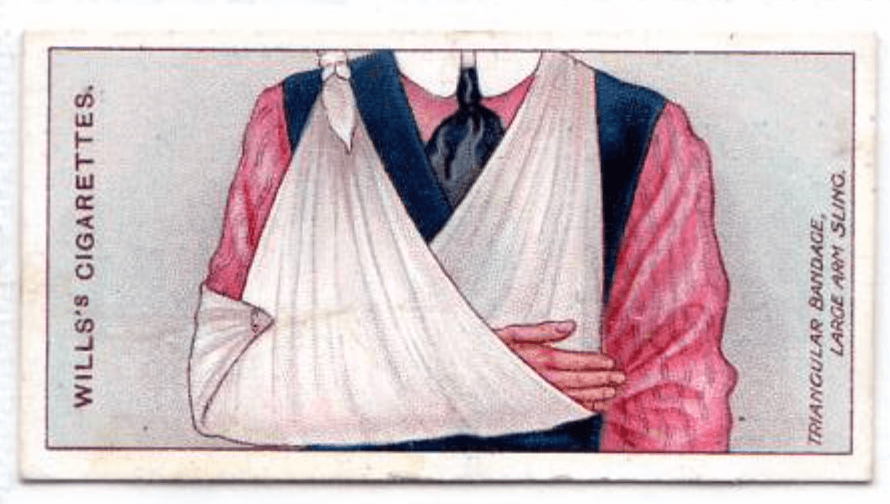 Note: Crisis Medicine is not affiliated with Chinook Medical and does not receive any compensation from them for this opinion/gear recommendation for our students.
Note: Crisis Medicine is not affiliated with Chinook Medical and does not receive any compensation from them for this opinion/gear recommendation for our students.
Dr. Mike Shertz is the Owner and Lead Instructor at Crisis Medicine. Dr. Shertz is a dual-boarded Emergency Medicine and EMS physician, having spent over 30 years gaining the experience and insight to create and provide his comprehensive, science-informed, training to better prepare everyday citizens, law enforcement, EMS, and the military to manage casualties and wounded in high-risk environments. Drawing on his prior experience as an Army Special Forces medic (18D), two decades as an armed, embedded tactical medic on a regional SWAT team, and as a Fire Service and EMS medical director.
Using a combination of current and historical events, Dr. Shertz’s lectures include relevant, illustrative photos, as well as hands-on demonstrations to demystify the how, why, when to use each emergency medical procedure you need to become a Force Multiplier for Good.

